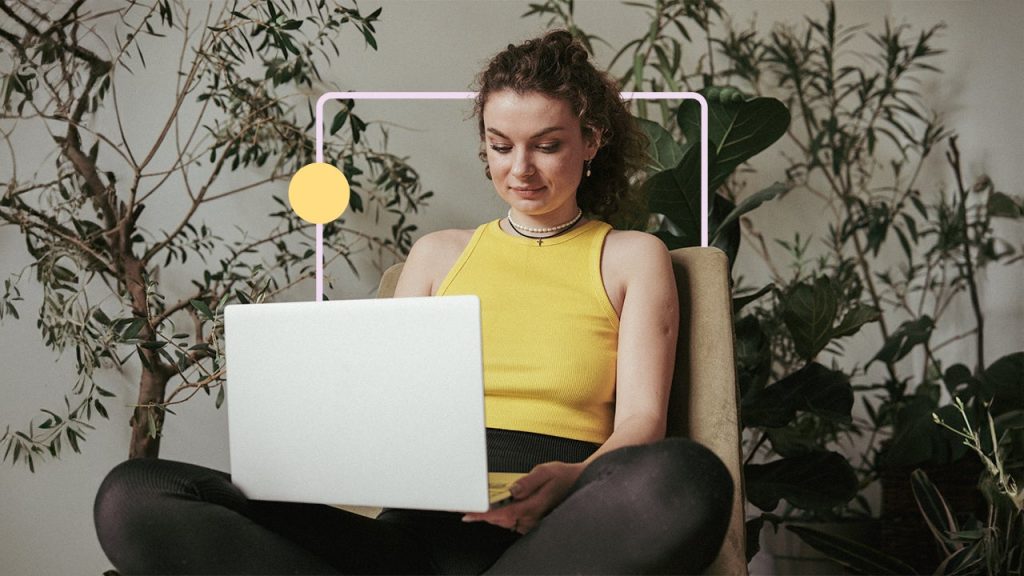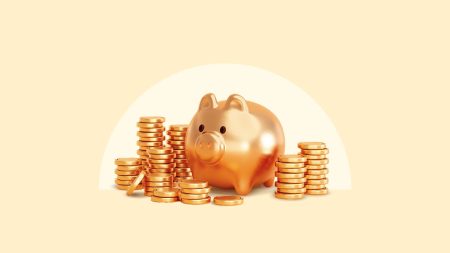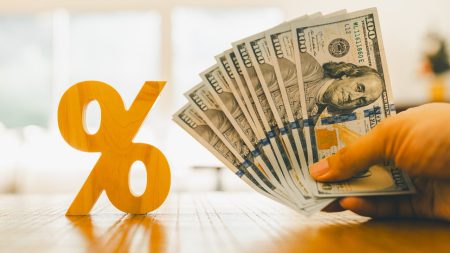Image by MementoJpeg/GettyImages; Illustration by Hunter Newton/Bankrate
Key takeaways
- Money market accounts combine features of checking and savings accounts — you earn interest like a savings account but get check-writing and debit card access like a checking account (not all MMAs offer these features).
- High-yield savings accounts typically offer rates between 4.00%-4.20% APY, while money market accounts often match these rates but may require higher minimum balances to earn the top APY.
- Both account types are FDIC-insured up to $250,000 per depositor per bank, making them equally safe places to park your money.
- Choose a savings account if you want simplicity and the highest possible APY; choose a money market account if you want transaction features like check-writing or need a hybrid savings-checking solution.
The difference between money market accounts and savings accounts boils down to this: Money market accounts act like savings accounts with checking account features (check-writing, debit cards), while savings accounts are pure interest-earning deposit accounts without transaction tools.
Both can offer competitive interest rates. Both are FDIC-insured. Both make sense for emergency funds or short-term savings goals. The right choice depends on whether you value transaction flexibility or maximum simplicity.
Here’s exactly when to choose each one and what to watch out for.
Ready to compare your options? See Bankrate’s best high-yield savings accounts | Compare money market accounts
Money market accounts vs. savings accounts: Quick comparison
High-yield savings accounts and money market accounts offer similar APYs these days. The real difference is transaction features (MMAs may offer checks/debit cards) and minimum balance requirements (MMAs often require higher balances for the best rates).
| Feature | Savings account | Money market account |
| Typical APY range | 4.00%-4.20% (high-yield) / 0.01% (traditional banks) | 4.00%-4.20% (competitive MMAs) / 0.44% (national average) |
| Check-writing ability | No | Sometimes (limited per month) |
| Debit card access | No | Sometimes |
| ATM withdrawals | Yes | Yes |
| Monthly fees | Often $0 at online banks / $5-$12 at traditional banks | Often $0 at online banks / may have balance requirements |
| Minimum balance requirements | Often $0 / varies by bank | Often higher ($1,000-$10,000 for best rates) |
| FDIC/NCUA insured | Yes | Yes |
| Transaction limits | No federal limit (bank policies vary) | No federal limit (bank policies vary) |
| Best for | Emergency funds, long-term savings goals | Hybrid savings-checking needs, people who want transaction access |
When to choose a savings account
Choose a high-yield savings account if:
- You want the highest possible APY without balance requirements: Online banks like Marcus by Goldman Sachs, Discover Bank, and Ally Bank offer competitive rates with no minimum balance. Money market accounts often tier their rates — meaning you need $1,000-$25,000 to earn the best APY.
- You don’t need check-writing or debit card access: If you’re building an emergency fund or saving for a specific goal, you don’t need transaction tools. In fact, not having a debit card helps prevent the temptation to spend.
- You value simplicity: Savings accounts are straightforward — deposit money, earn interest, transfer to checking when needed. No checks to manage, no debit cards to track, no tiered rate structures to navigate.
- You want to keep savings and spending completely separate: A pure savings account creates a psychological barrier between your savings goals and everyday spending. Money market accounts blur this line with transaction features.
What to watch for:
- Traditional bank savings accounts pay terrible rates: Big banks like Chase and Bank of America offer 0.01% APY on standard savings accounts. That’s $10 in annual interest on a $100,000 balance. You may want to choose a high-yield savings accounts from an online bank instead.
- Some banks still enforce withdrawal limits: While the Federal Reserve removed Regulation D restrictions in 2020 (the 6-withdrawal-per-month rule), some banks still enforce these limits. Check your bank’s policy.
- No transaction features means extra transfers: If you need to pay a bill or make a purchase from savings, you’ll need to transfer to checking first (usually takes 1-3 business days).
Compare Bankrate’s best high-yield savings accounts.
When to choose a money market account
Choose a money market account if:
- You want earning potential plus transaction flexibility: Money market accounts let you earn competitive interest (similar to high-yield savings) while having limited check-writing and debit card access. This works well for occasional large expenses (property taxes, insurance premiums, irregular bills).
- You’re building a “buffer account” between checking and savings: Some people use MMAs as a middle ground — higher interest than checking, more accessible than pure savings. You can pay bills directly from the MMA without transferring to checking first.
- You have a higher balance and want tiered rates: If you maintain a high balance, MMAs sometimes offer slightly better rates than savings accounts at the same bank. Always compare actual APYs though — this isn’t guaranteed. Here are four tips to get the best possible money market account rate.
- You want one account for both saving and occasional spending: Rather than juggling checking and savings, an MMA can serve both purposes. This simplifies banking for some people but can blur the line between saving and spending for others.
What to watch for:
- Tiered rates can be misleading: An MMA might advertise 4% APY, but that rate only applies to balances above $25,000. Below that threshold, you might earn just 0.50%. Read the fine print on balance tiers.
- Monthly fees if you don’t meet minimums: Many MMAs charge $10-$15 monthly fees if your balance drops below a certain threshold. This can quickly eat into your interest earnings.
- Limited transactions despite debit card access: Just because you have a debit card doesn’t mean unlimited use. Many MMAs still limit you to 6-10 transactions per month. Exceed that and you’ll pay excess transaction fees.
- Not all MMAs offer check-writing or debit cards: Some MMAs are basically savings accounts with a different name. Verify which transaction features are actually included.
Compare money market account rates.
The APY reality check: Are MMAs really better?
Here’s what to know about money market accounts vs. savings accounts in today’s rate environment: They pay basically the same rates. The days when MMAs consistently paid higher rates than savings accounts are over. As of December 2025, competitive high-yield savings accounts and money market accounts both pay around 4% APY.
Therefore, don’t choose an MMA thinking you’ll automatically earn more interest. Compare actual APYs at specific banks, and pay close attention to balance requirements for tiered rates.
Money market accounts vs. money market funds: Don’t confuse these
A money market account is a bank deposit account insured by the FDIC up to $250,000. A money market fund is an investment product that’s not FDIC-insured and not regulated like bank accounts.
| Feature | Money market account | Money market fund |
| FDIC insurance | Yes, up to $250,000 | No |
| Where to open | Banks and credit unions | Brokerage firms, mutual fund companies |
| Typical yield | 4.00%-4.20% APY | Varies, often slightly higher than MMAs |
| Liquidity | High (daily access) | High (daily access) |
| Best for | Emergency funds, short-term savings | Excess cash in brokerage accounts, parking funds between investments |
If you have cash in a brokerage account (Fidelity, Vanguard, Schwab) that you’re not currently investing, money market funds often offer competitive yields and same-day access. But for true emergency funds, stick with FDIC-insured money market accounts or savings accounts.
Learn more: Money market account vs. money market fund
How to decide: The 3-question framework
1. Do you need to write checks or use a debit card from this account? If yes, you’ll want to consider a money market account.
2. How much money will you keep in the account? If you plan to keep a lower balance (say under $5,000) you may want to consider a high-yield savings account, as MMAs come with high minimum balance requirements.
3. What’s your primary goal for this money?
- Emergency fund (don’t touch unless emergency) → High-yield savings account (no transaction temptation)
- Savings for specific goal (house down payment, vacation) → High-yield savings account (pure savings focus)
- Hybrid savings-spending (occasional large bills) → Money market account (transaction flexibility)
- Buffer account between checking and savings → Money market account (easier to pay bills directly)
Most people should choose a high-yield savings account. It’s simpler, offers the same or better rates and keeps savings separate from spending. Money market accounts make sense for specific situations where you need transaction flexibility.
Bottom line
Both savings and money market accounts are valuable tools for managing your finances, especially in today’s high-rate environment. The best choice depends on your specific needs, spending habits and financial goals.
Consider a high-yield savings account if you want to maximize earnings on money you won’t need to access frequently. These accounts typically offer the highest rates and simplest fee structures.
Consider a money market account if you want the flexibility to write occasional checks or use a debit card while still earning interest on your balance.
For most people, a high-yield savings account is the better choice. It’s simpler, offers equal or better rates, and keeps savings mentally separate from spending. Money market accounts solve a specific problem (need transaction access from savings) that most people don’t actually have.
Frequently asked questions
Why we ask for feedback
Your feedback helps us improve our content and services. It takes less than a minute to
complete.
Your responses are anonymous and will only be used for improving our website.
Help us improve our content
Read the full article here












